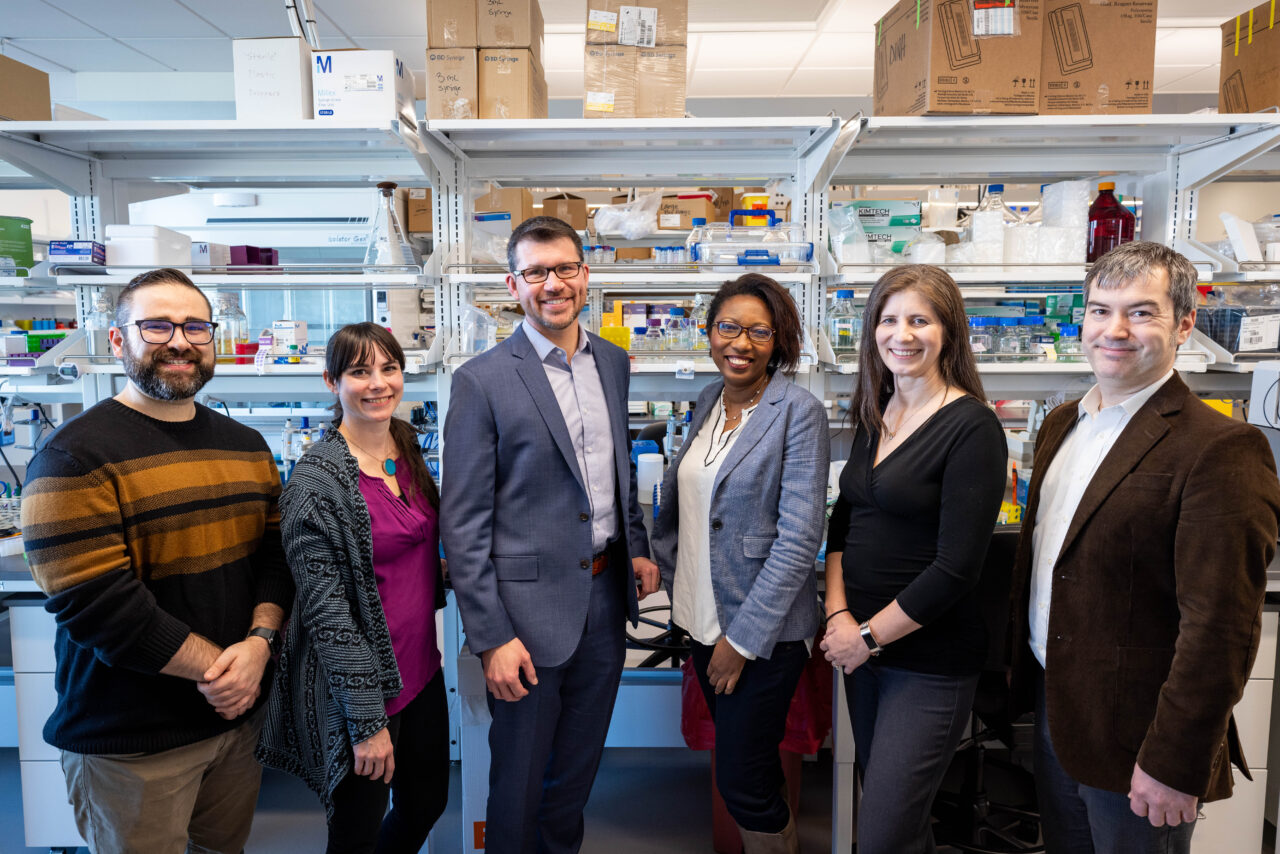Interdisciplinary research lies at the heart of Northwestern University’s research ethos. At the Center for Synthetic Biology, a deliberate effort to foster collaboration between various disciplines has led to the creation of joint research spaces. These spaces not only bring together CSB faculty labs but also encourage collaboration among researchers and clinicians from both the medical and Evanston campuses.
“One of the challenges we’ve had at Northwestern is creating more collaboration and connection between the two campuses,” says Milan Mrksich, the Henry Wade Rogers Professor of biomedical engineering and founding director of the Center for Synthetic Biology (CSB). “It’s an opportunity with increasing value because a lot of the engineering disciplines work on medical, or biological problems where great partners are working in Chicago. However, there is not so much awareness about who’s working on those problems, how to interact with them, and how to get connected and start to do things collaboratively to pursue really exciting research.”
Last October, when three CSB core faculty members, Josh Leonard, Neha Kamat, and Keith Tyo, outgrew their labs in the Technological Institute, the University created a new collaborative space for them in Mudd Library located on the University’s Evanston campus. This proximity has facilitated spontaneous interactions and conversations among researchers leading to new ideas for grants and projects.
“Most of my significant collaborations are with other members in the Center of Synthetic Biology,” says CSB faculty member Neha Kamat, “because we are all on campus and can easily get into a room together and start talking. That direct access to one another fuels ideas and has contributed to new grants and projects.”
Similarly, the Louis A. Simpson and Kimberly K. Querrey Biomedical Research Center (SQI) on the Chicago medical campus has embraced an open lab concept, dividing its 11th floor into four distinct “neighborhoods” for SQI, the Biomedical Engineering department, Querrey Simpson Institute for Bioelectronics, and Center for Synthetic Biology. This arrangement, adjacent to a leading medical center, attracted three rising stars in the synthetic biology field: Arthur Prindle, Gabe Rocklin and Yogesh Goyal whose labs now occupy a significant portion of the 11th floor space.
“We published a PNAS [Proceedings of the National Academy of Sciences] paper last August about a diagnostic for gut inflammation and the first author is Dr. Jonathan Xia, a PSTP [Northwestern’s Physician-Scientists Training Program] fellow in my lab,” says Prindle. Jonathan was able to bring human samples for the researchers to test their engineered probiotic diagnostic on. “It’s pretty unique for synbio papers to have that. I had not been exposed to it before being here. I wouldn’t have recruited someone like that or been confident to try to do something like that if I wasn’t in a medical center.”
For students like Stephen Lander, a member of Prindle’s lab and Northwestern’s Medical Scientist Training Program, access to cutting-edge facilities and collaboration opportunities is invaluable.
“Arthur’s lab is new and innovative,” says Lander. “If I was setting up a lab, I would want to be in a space like this with access to the hospital and proximity to incredible facilities. It’s great to be able to reach out and walk over to the Rocklin Lab for help with computation or protein purification. It feels like your community and network are bigger.”
To strengthen connections across both the Chicago and Evanston campuses, CSB alternates its events and programming across the two locations. In addition, faculty from Evanston spend time on the Chicago campus and vice versa to immerse themselves in each other’s research.
For instance, over the years, the Mrksich Lab has collaborated closely with Joseph Bass, MD, Chief of Endocrinology at Feinberg, on projects exploring metabolic regulation using biochip arrays.
“I’ve always found it incredibly exciting to connect with somebody who’s really on the front lines of a clinically relevant problem,” says Mrksich. “The interconnected research spaces at Northwestern drive synthetic biology research forward by facilitating collaboration, sparking innovation, and bridging the gap between disciplines and campuses.”
Feature image: CSB members Ashty Karim, Niall Mangan, Joshua Leonard, Ludmilla Aristilde, Danielle Tullman-Ercek and Keith Tyo in the shared research space on the 5th floor of Mudd Library.
by Lisa La Vallee
